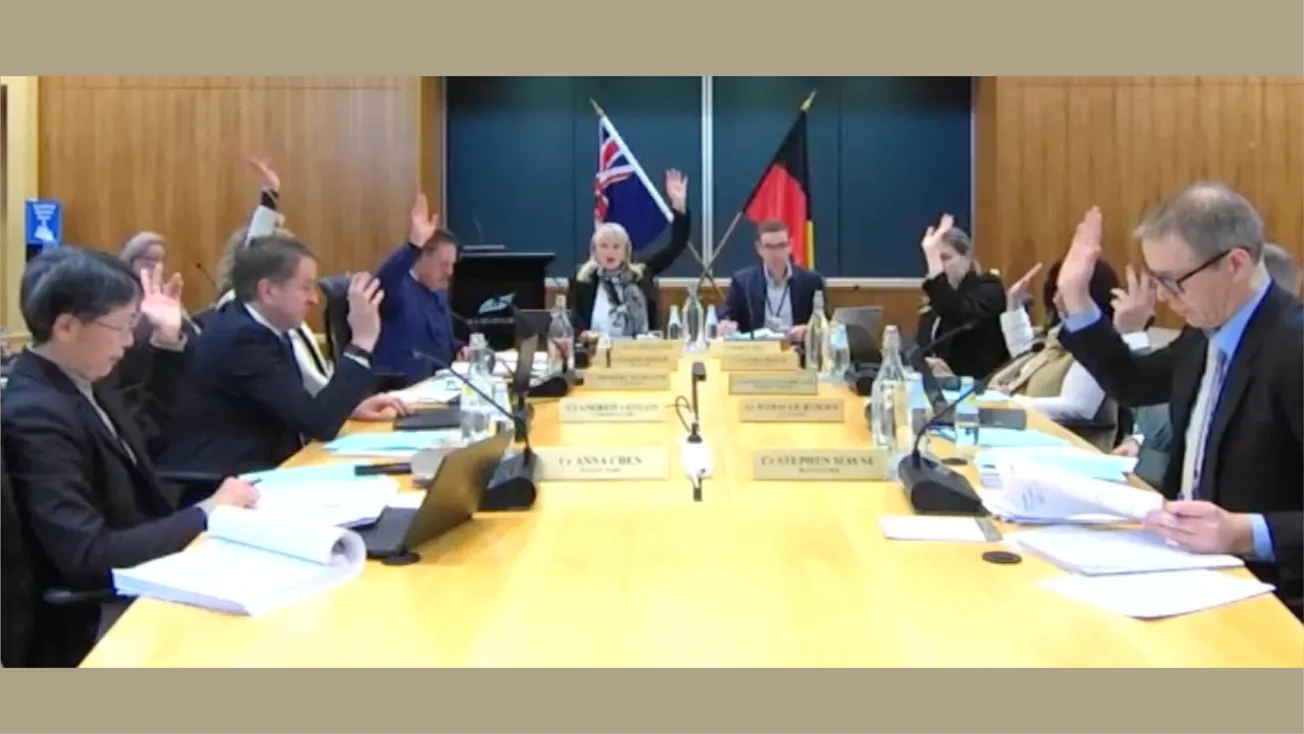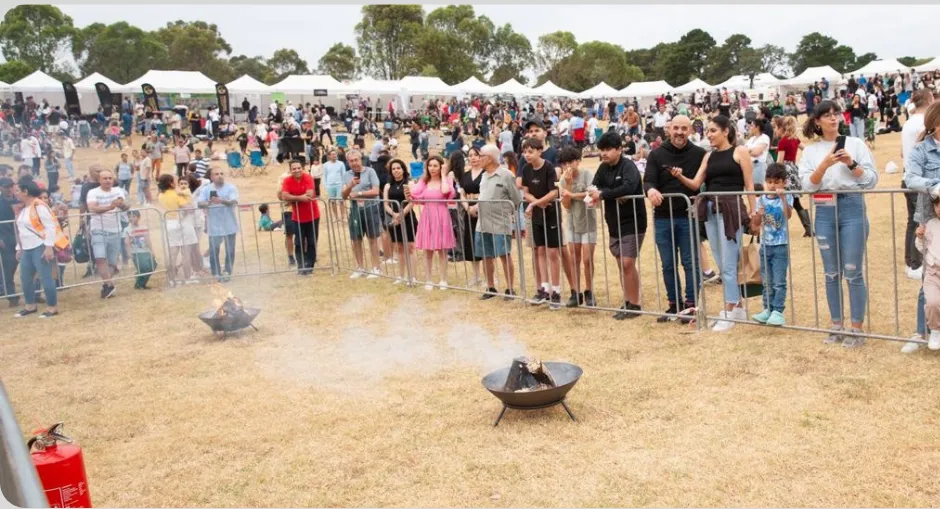Table of Contents
By Nour Hegazy & Phoebe Miller
The August and September council meetings, each over three hours, saw spirited debates, particularly over Manningham Council’s submissions to the State Government and the North East Link Project. Councillors unanimously criticised the state’s proposed housing targets, ResCode changes for multi-unit developments, and the Doncaster Park and Ride redevelopment plan.
During discussions on the Council Submission to Plan Victoria and Draft Housing Targets, councillors voiced concerns over the state’s ambitious target of 39,000 new homes by 2051, far exceeding Manningham’s goal of 8,200 by 2036. They questioned the feasibility of meeting such targets, especially without infrastructure commitments, citing labour shortages and economic conditions. Councillors warned that rapid development could harm Manningham’s liveability, risking overcrowding and erosion of neighbourhood character, and criticised the state for burdening local governments without adequate resources. The Council unanimously endorsed its submission, stressing Manningham’s unique infrastructure needs.
The North East Link Project (NELP) released their Urban Design Landscape Plan (UDLP) for the Doncaster Park and Ride site for community consultation in September. Astonishingly, the proposed plan will not increase car parking capacity. Construction is set to begin in January 2025, and the site will be closed until the development is complete, which NELP anticipates will be in 2028.
In response, Manningham Council prepared a submission that includes a mixed-use Transit-Oriented Development (TOD), which is pedestrian- and cycling-friendly and includes amenities such as a gym, retail spaces, and public open spaces. Cr Lightbody passionately described the TOD concept, imagining a place where people could do their groceries and go to the gym in one location, reducing the need for multiple car trips.
Cr Diamante criticised the redevelopment for lacking future-proofing and additional parking capacity, calling it a waste of money. Cr Chen echoed concerns about the closure’s impact and urged the community to engage in opposing the current plan. She advocated for a mixed-use development that aligns with future needs. Cr Laura Mayne pointed out the mismatch between the state’s housing targets and infrastructure support, labelling it “hypocritical,” and called for more investment in transport facilities. Cr Stephen Mayne suggested exploring temporary parking solutions and expressed disappointment in the state’s failure to address capacity concerns. Cr Kleinert criticised the government for ignoring local input, urging the community to voice opposition. Mayor Carli Lange reinforced the importance of community engagement and emphasised that the council’s proposal would better support future growth.
The council unanimously supported the submission opposing the current government plan.
The Outdoor Sports Infrastructure and Allocations Policy sparked over an hour of sometimes heated discussion, with several points of order raised throughout. Cr Conlon praised the policy for increasing community access to sports facilities, highlighting the benefits of a covered bowling green at Mullum Mullum Reserve. He emphasised that the policy would improve participation, mental and physical health, and social inclusion, particularly for seniors. Cr Kleinert supported the policy, noting extensive consultation and its broad benefits across various sports. She acknowledged the need for further investigation into the covered bowling green. Cr Diamante proposed an amendment to delay endorsement of the covered bowling green until more consultation and cost details were provided, advocating for a case-by-case consideration. Cr Gough backed the amendment, citing the need for more transparency and equitable funding across all sports. Cr Stephen Mayne opposed the amendment, arguing for immediate progress on the covered green, citing similar successful projects in other councils.
Ultimately, the proposed amendment by Cr Diamante was not carried, and the original policy was endorsed by a majority of councillors, with only Cr Diamante voting against it.
Coincidentally, at the start of the September meeting, Greg Pell, President of St David’s Cricket Club, asked a question about equity in sports funding, an issue we raised in our editorial in Issue 18 (Sept./Oct. 2024). His question was: “After council collectively invested more than $25 million over the past 15 years in new or upgraded pavilions at Templestowe Reserve, Petty’s Reserve, Domeny Reserve, Warrandyte, Ted Ajani, Schramms, Reischiecks, and, most recently, the new $3m baseball pavilion, what do we at St David’s need to do to get onto this impressive council investment program?” Ms. Lee Robson, Director of Connected Communities, explained that projects are prioritised based on asset condition, risk, participation benefits, and environmental sustainability. She mentioned that condition audits are underway for all pavilions, including Donvale Reserve, and a council officer will discuss the process with the club soon.
The Department of Transport and Planning has proposed major changes to ResCode, which governs multi-unit developments in Victoria. The changes would require councils to approve applications that meet all development standards, with no appeal rights for objectors if compliance is achieved. Manningham Council was one of the councils invited to make a submission on the reforms. Once again, councillors were vocal in their criticism of the proposed changes.
Cr Gough and Cr Stephen Mayne acknowledged the need for reforms and highlighted the need to speed up planning. However, they raised concerns about losing local control over neighbourhood character and amenities due to reduced appeal rights, and they criticised the rushed process. Councillors expressed strong concerns that the proposed changes would severely damage neighbourhood character and liveability in Manningham. They warned that reduced privacy from lower screening, increased site coverage, and the loss of control over setbacks and sunlight protection would undermine the area’s unique character. The changes were also seen as threatening the overall quality of life, with risks to local amenities, tree canopy, and climate goals, creating a more concrete, less liveable environment for residents.
The council also discussed planning application PLN 24/17 for a 13-story residential building on Frederick Street, Doncaster, with 403 units and 477 parking spaces. Due to a missed decision deadline, the application moved to VCAT, and council endorsed a position for its consideration.
Initially, council officers objected to the height, traffic, and sunlight issues, but recent amendments have addressed these concerns, and the design now largely complies with standards. While the development will help meet housing demands, the council acknowledges the 16 objections from residents and will advocate strongly at VCAT, reflecting local concerns, including the need for adequate living space and functionality in the design.
The council passed the motion unanimously, supporting the amended plans and conditions.
At the final meeting of the council term, a motion of appreciation honoured outgoing Mayor Cr Carli Lange.
Cr Laura Mayne praised Lange’s dedication, describing her as compassionate, community-focused, and full of positivity. Cr Michelle Kleinert commended Lange’s resilient leadership through a challenging year, while Cr Stephen Mayne ranked her among his top three mayors, noting her skill in conflict resolution. Other councillors echoed these sentiments, acknowledging her positivity, work ethic, and family’s sacrifices. In response, Lange thanked her family, colleagues, and the community, expressing pride in her service and her commitment to making Manningham a better place. She also extended special thanks to Deputy Mayor Laura Mayne for her support and to retiring councillor Stephen Mayne for his advocacy.








